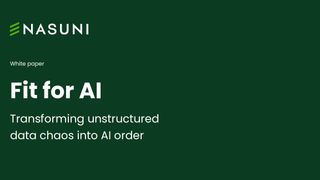Capacity management: new opportunity in the application economy
How right-sizing computing environments can become a new market differentiator for MSPs

As the pace of technological change intensifies, driven in part by the demands of the application economy, organisations across Europe are starting to make the move away from large, long-term outsourcing IT arrangements that support their businesses in favour of more agile, flexible and scalable solutions. Such changes allow them to shorten innovation cycles and respond to market changes more quickly and effectively, while keeping costs at bay.
In a world where 70 percent of computing environments are oversized, this demand for flexibility is both a threat and an opportunity for managed service providers (MSPs). Ten years ago, the cloud movement seemed synonymous with automation, but set against the backdrop of consumer-led market forces, today’s MSPs desperately need to deliver the right-sized capacity that meets the twin forces of resiliency and cost-efficiency. By placing capacity management at the core of an updated service offering, organisations can take appropriate decisions on how to scale their IT investment according to their business needs.
That rings true because for most IT departments in the dynamic application economy, matching infrastructure capacity to peaks in user demand is a major challenge. With the growth of virtualisation and multi-tenant cloud computing, capacity planning has become a complex and time-consuming task. It is no longer a question of looking at a single environment, a single cloud or a single application.
As such, many IT departments lack the necessary skills and expertise to address this complexity and would need to spend considerable amounts on staff training and expensive planning tools to address this skills gap. For many departments, the cost is simply not worth it. And since under sizing gives IT directors sleepless nights – it can lead to loss of revenue and serious reputational damage – IT departments have been overspending on capacity that most companies don’t need for decades.
Today, they can no longer afford to do that. In the application economy, preventing outages is fundamental, not only to the smooth running of the business but also to keep customers happy. A recent survey from CA Technologies clearly shows that consumer patience is limited – brands in Europe are at risk of losing 25 percent of their customer base through a poor reliability application and as much as 19 percent of consumers would leave a brand temporarily. Moreover, 58 percent of consumers say their tolerance for technical issues impacts their decision to use or purchase a brand’s application, and a staggering 47 percent have dumped a brand’s application for another brand due to a better feature or service.
It is clear that right-sizing environments can become a true new market differentiator for MSPs – not only addressing the bottom line and helping MSPs partner more effectively with their clients by enabling them to achieve greater efficiency, but also allowing them to forge strong customer relations by showing an understanding of changing customer needs. With workloads becoming more dynamic and services becoming more digitised, MSPs can be the missing link that helps customers find the optimal balance and make right-sizing their infrastructure a reality, rather than a ‘nice to have’.
Robert Limbrey is senior principal consultant, channel, CA Technologies
Channel Pro Newsletter
Stay up to date with the latest Channel industry news and analysis with our twice-weekly newsletter




















